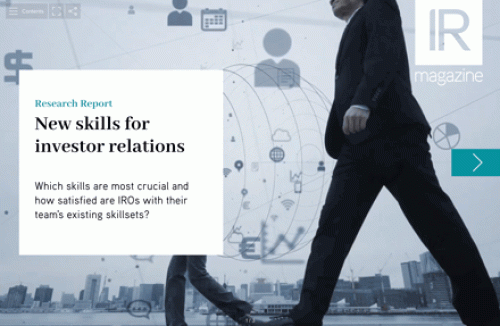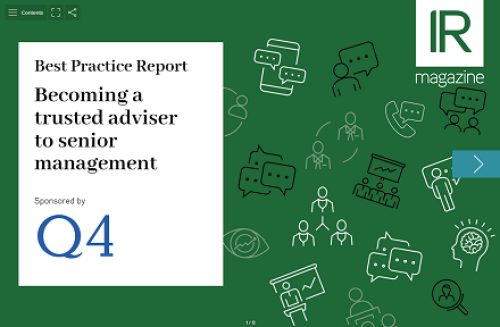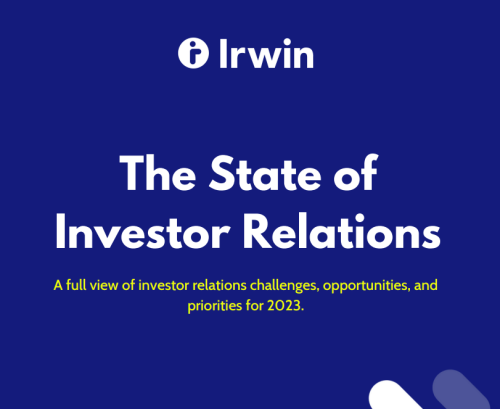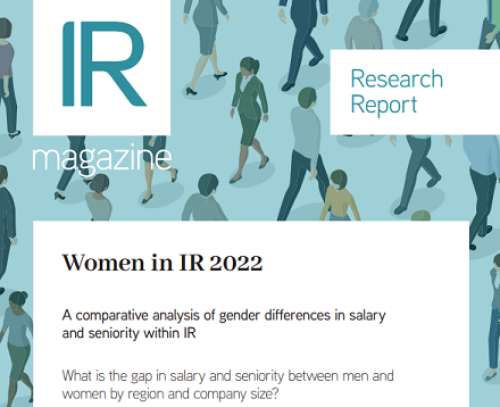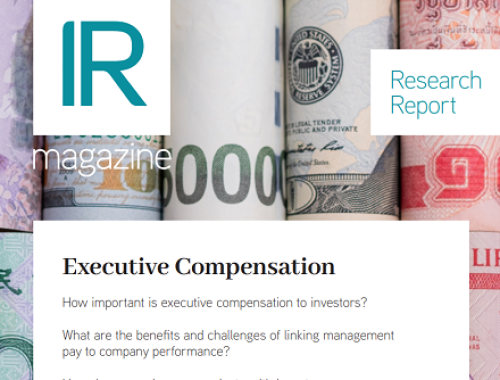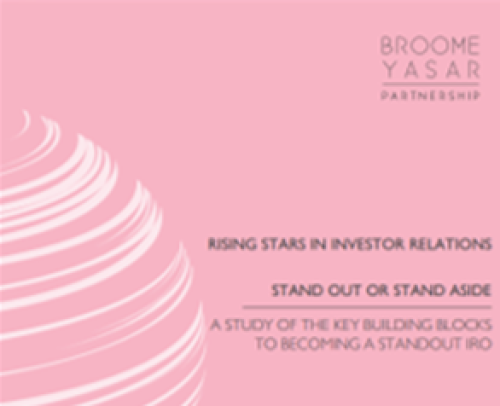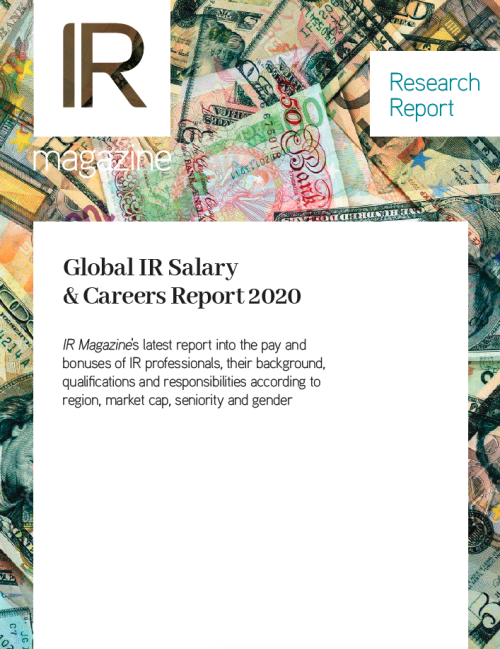Jeff Chastain, Noble Corp’s vice president of investor relations, talks about his 2013 IR Magazine Award winning program
Jeff Chastain, winner of this year’s IR Magazine Award – US for best IRO in the mid-cap category, is a veteran in the Texan energy IR world. Starting out as a financial controller for a large Dallas-based oilfield equipment and services firm after completing an MBA in finance, he first stepped into investor relations when he was offered an IRO position at an offshore drilling company in Houston around 20 years ago. Following a couple of similar roles at other oil project contracting firms, the former president of NIRI’s Houston chapter has successfully leveraged his knowledge and experience to bring Noble’s IR into the spotlight.
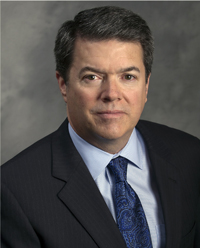 ‘IR is one of those functions that should be involved in the strategic direction of the company’ – |
Noble hasn’t previously featured in our short lists, but this year it appears on three: best IR professional – mid-cap (which you won), most progress in IR, and best in sector – oil & gas. How would you describe the effort put in by your firm this past year to reach this point?
I began as vice president of IR with Noble in July 2011, so my first full year was 2012 – I was quite surprised and very honored by our nominations. I think they have more to do with the company’s strategic direction and a transformation we are making that gives us a lot to discuss with the investment community. Furthermore, these types of efforts are seldom individual; there has to be a team involved. I direct it, but if you think about the bigger team – who’s going out, who’s communicating with the financial community – it’s the CEO, CFO and individuals involved in strategic marketing and operations. There’s a team approach, a bench of people I like to get involved depending on the effort, and that has been helpful in increasing the visibility of our managers.
Have you done more traveling this year, and if so, where to?
Yes, significantly more. I surpassed 100,000 miles of travel last year with one airline; that’s my best way of measuring the amount of time I’ve spent traveling. I’ve increased the number of conferences I attend and the number of roadshows of the non-deal variety. Again, this was driven by the fact that there was greater interest from the financial community in understanding the company’s direction, and we took full advantage of that. It was a global effort, not just the US but also extensively western Europe, and it paid off. Our ownership in Europe increased almost 30 percent.
What is the most commonly asked question you get from investors and analysts?
I keep detailed records of each meeting and as original or repeat questions come up, I just note how any times something is being asked, in order to get a sense of what’s really driving people’s thinking. That makes for good information to communicate to your board. The biggest question we tend to get is about the possibility of a master limited partnership (MLP) structure for our business. An MLP is another way of structuring a portion of your assets that is heavily driven by paying yields or a dividend.
Has there ever been an occasion when a meeting with investors or analysts has influenced or helped shape your strategy?
There are a lot of good details that can be harvested from every meeting. For example, the way I constructed our analyst day came almost directly from a comment made by an individual we were having a meeting with. These people enjoy attending analyst days, but one of the things they always felt was lacking is that they still tend to see the people they typically see in investor settings, whether it’s an industry conference or a one-on-one meeting.
They really wanted the analyst day to provide more exposure to the management ranks so they can get a sense of the knowledge base of the management team and the talent there. So when I did an analyst day in May 2012, I included people all the way down to regional managers on a global scale. We had managers from Brazil, the Middle East and the North Sea region. They were well coached before they were put in front of investors on the types of topics they would be asked and areas we wanted them to steer clear of. We held a lunch where each table had one of these managers involved and investors could just pick their table. We got a lot of good feedback on that meeting.
How would you describe your tech strategy? Do you spend most time on videoconferencing, website, webcasts, IR apps or social media?
I would say videoconferencing, because if you’re trying to develop a global shareholder base, which we are, it’s going to eventually move beyond western Europe, where today most of that foreign ownership resides. I’m going to have to spend more time in places like the Far East and Latin America, where you have more and more interest from the equity side of things in our business, the global energy and offshore drilling business. That can be done with videoconferencing a lot more affordably than getting on a plane, although at some point you will have to fly out because you need to have that face-to-face contact. Also, our website has recently been redesigned; it’s now more user-friendly with more content, and we post a lot of things from a disclosure standpoint.
Could you provide details of your investor base?
We’re heavily institutionally owned, at around 90 percent. The last 10 percent is retail and management board ownership. When you look at the institutional portion, about 10 percent is outside of the US, and most of that is western Europe. We’re a Switzerland-domiciled company, which I think raises the presence of the company in some parts of Europe. We also have ownership in Asia, and the next trip I make will be to Tokyo, Hong Kong and Singapore to develop that more.
How would you describe your strategic responsibilities?
Investor relations is one of those functions that should be involved in the strategic direction of the company, because ultimately it’s going to be the IRO who has to explain that direction to investors – and how better to understand it than if you’re involved in part of the ongoing discussion on that topic? We’re in a stronger position to provide strategic direction, particularly as it pertains to how the financial community may react to a particular strategic decision being considered by the company. An IRO would probably know from the number of discussions held day to day with various people what that reaction might be.
Where do you see innovation happening in current IR practice?
Innovation might come more from the timeliness of certain types of information, which is very important to IR. The one thing I think about is the timing of institutional ownership reports; currently, by the time you get them, they are usually 45 days old. A lot of IR departments use surveillance-related technologies to try to get a more current assessment of ownership. I think some innovations may come in the near term that may allow that type of information to be a bit more reliable. One other thing is the involvement of the board of directors in the interface with the financial community. Investors want to hear more about what board members are thinking regarding the company’s strategies.
What is the biggest IR challenge you have faced in the current economic environment?
If there are concerns about global economic developments and how they may affect your business, your managers are certainly going to be focused on other things that may take away some of the time they could otherwise devote to more extensive IR exposure.
Their priorities shift. The world has undergone significant change, and it is happening at an accelerating pace. Understanding the impact of that for your industry and your business is crucial because investors are obviously coming to their own conclusions and you have to be able to understand their side and, if necessary, argue against their position.
This profile is taken from the IR Magazine Investor Perception Study – US 2013. The 120-page report includes the US Top 100 ranking of the country’s leading IR teams, decided by a survey of more than 700 portfolio managers, buy-side and sell-side analysts, plus in-depth interviews with IROs and senior management at highly ranked firms. Find out more at www.irmagazine.com/research.

